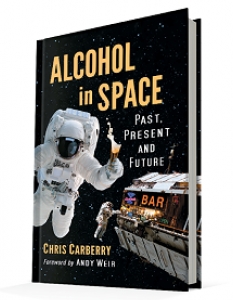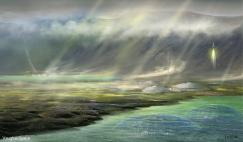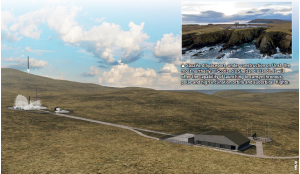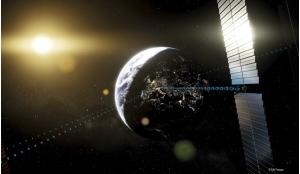Books have been published on many aspects of space culture (including art, tourism, psychology and sex), but this must be the first on alcohol. As the blurb purports, “the production and consumption of alcohol has played a significant role in human society since the dawn of civilization”, asking “will this still hold true when humanity is exploring and settling the outer reaches of space?”. The author answers the question by telling stories of “the numerous occurrences of alcohol consumption in space and current space-related drink projects”.
Following a brief history of alcohol and society, this light-hearted but informative book delves into “booze in science fiction” and “the history of drinking in space”. From Star Trek’s Romulan Ale to Hitchhiker’s Pan Galactic Gargle Blaster, the story is familiar, but what about real life? What the author refers to as “possibly the first” example of “non-terrestrial drinking” occurred during the Apollo 11 mission, when Buzz Aldrin took communion after landing. Aldrin recalls the way the wine “curled slowly and gracefully up the side of the cup” in the one-sixth gravity, making science out of a religious event. The “first reported alcohol consumption” by Russian spacefarers was during the 1971 Salyut-7 mission when one of the cosmonaut’s birthdays was celebrated with a small bottle of Armenian Cognac; apparently, Cognac was regularly smuggled on board the Mir space station.
In consideration of the foodstuffs from which alcohol can be fermented, the author makes a detour into “farming in space”, then concludes with some “final thoughts” (such as “there is an enormous cloud of alcohol 6,500 light years from Earth…that is literally the birthplace of new stars”). More seriously, he considers the safety, health and public perception elements of his subject, along with some of the commercial opportunities. While space agencies may continue to ban alcohol consumption in their spacecraft and stations, it seems inevitable that space tourism will eventually feature the occasional shot or bevvy. One for the orbit, anyone?











